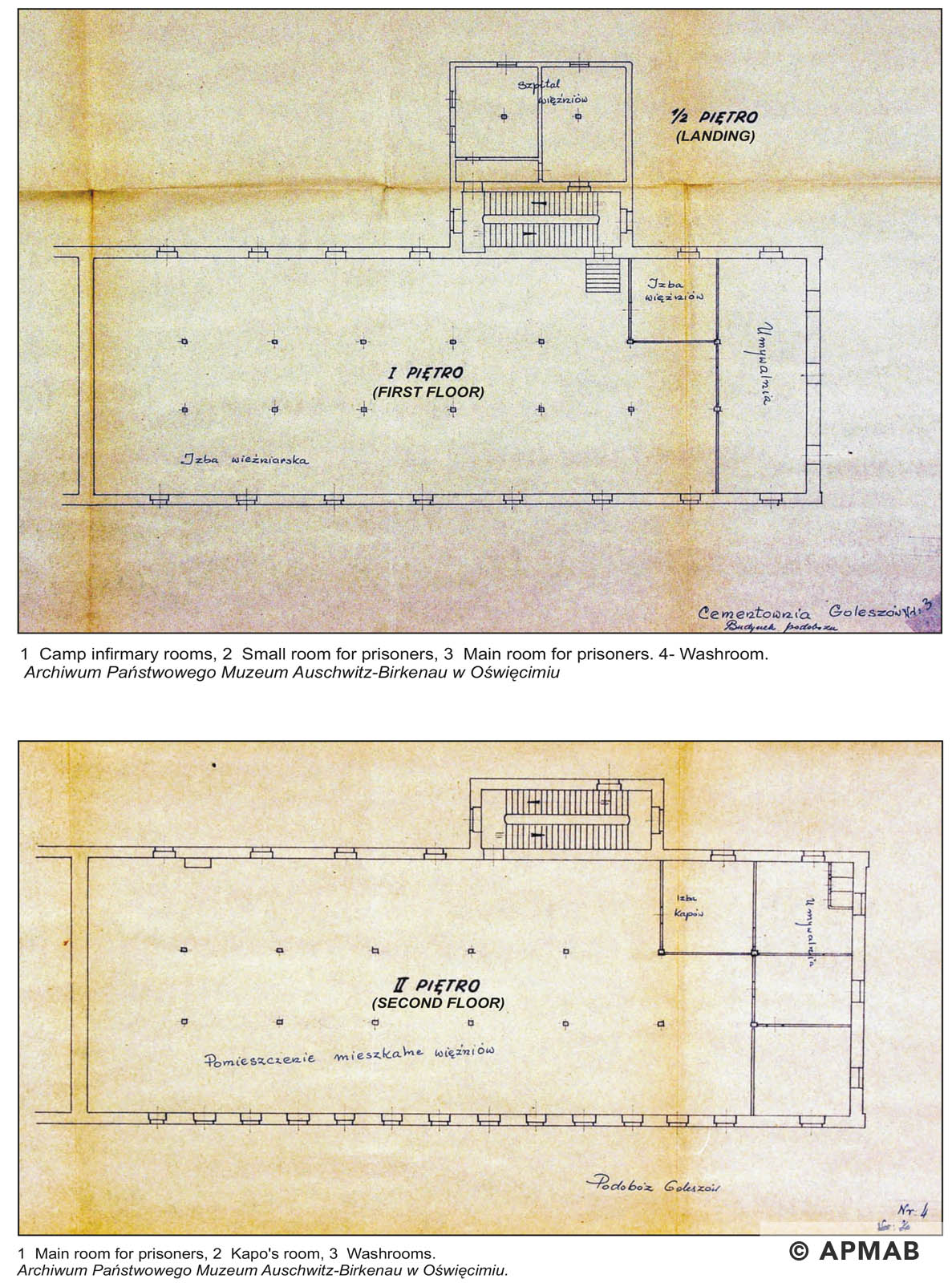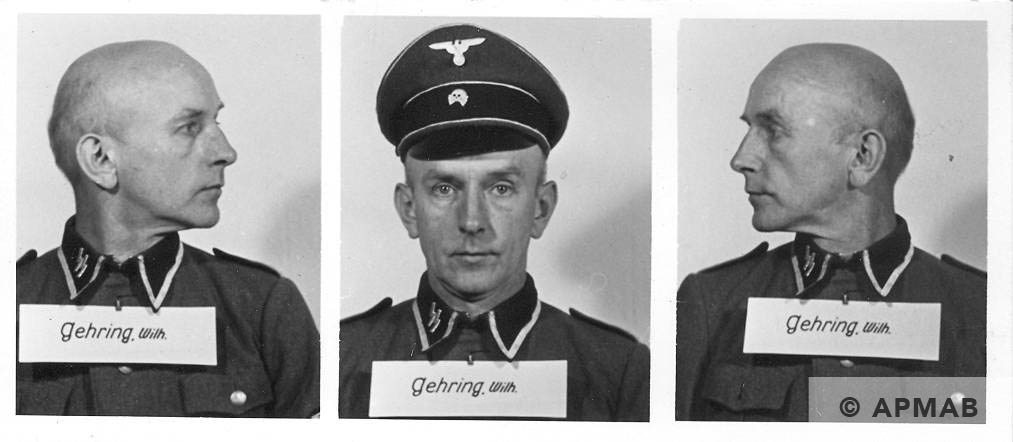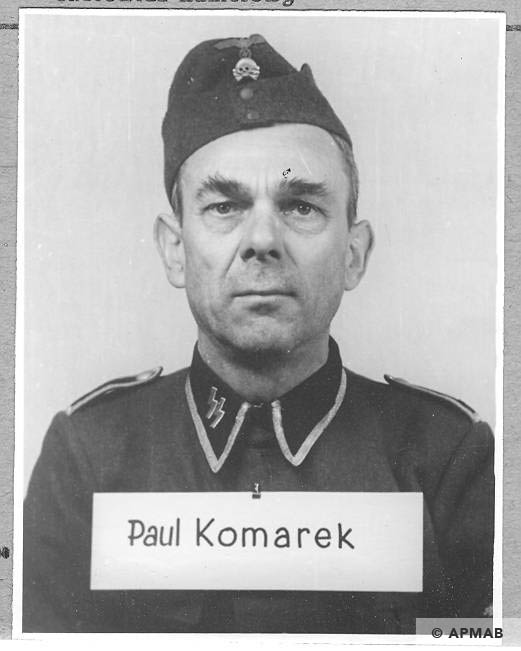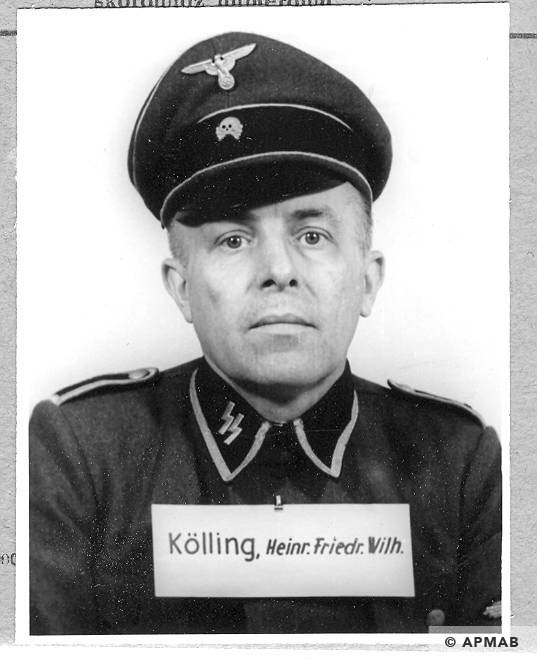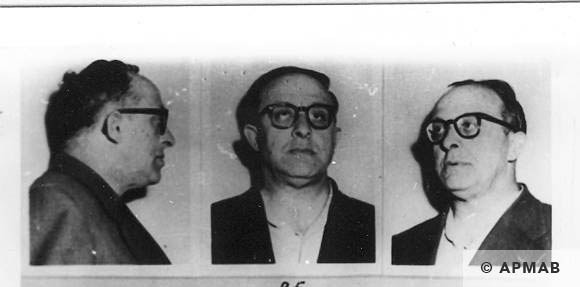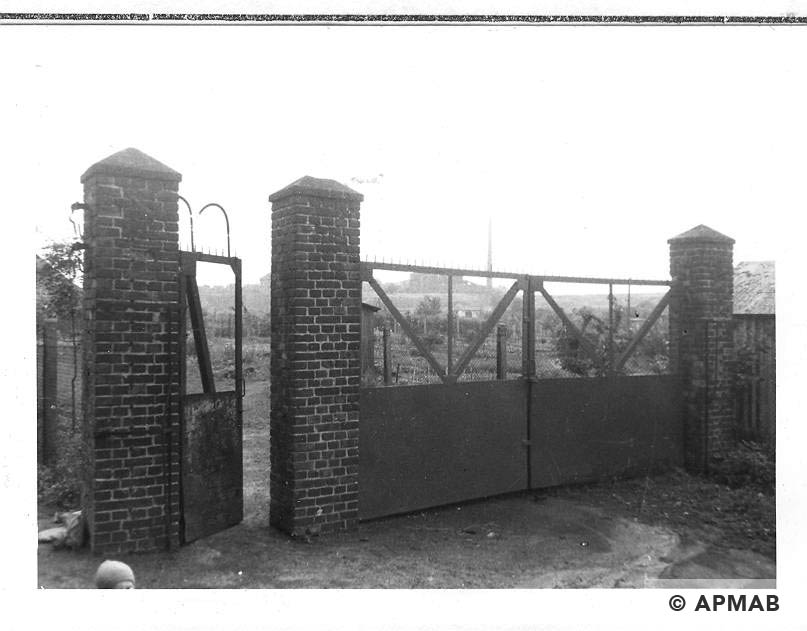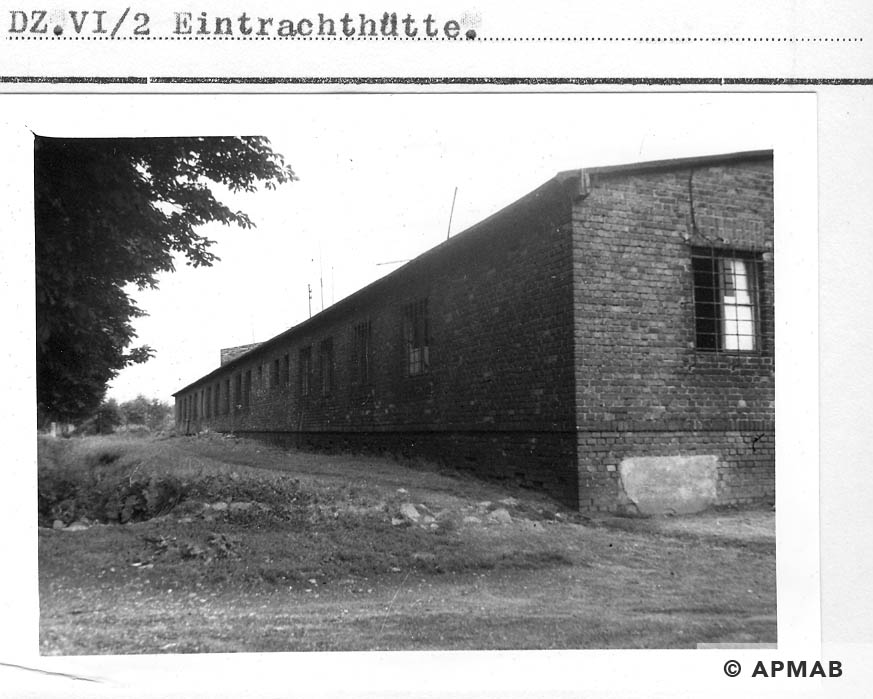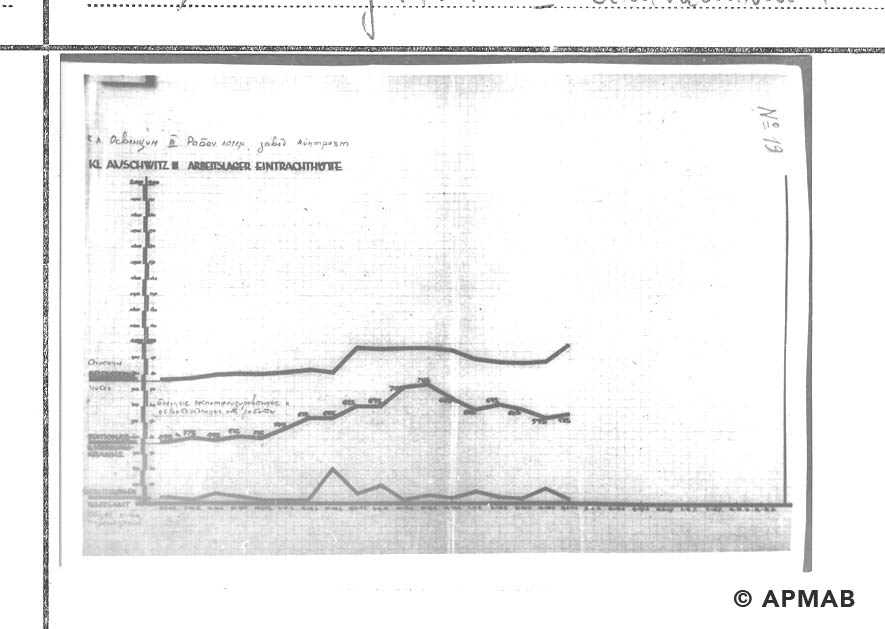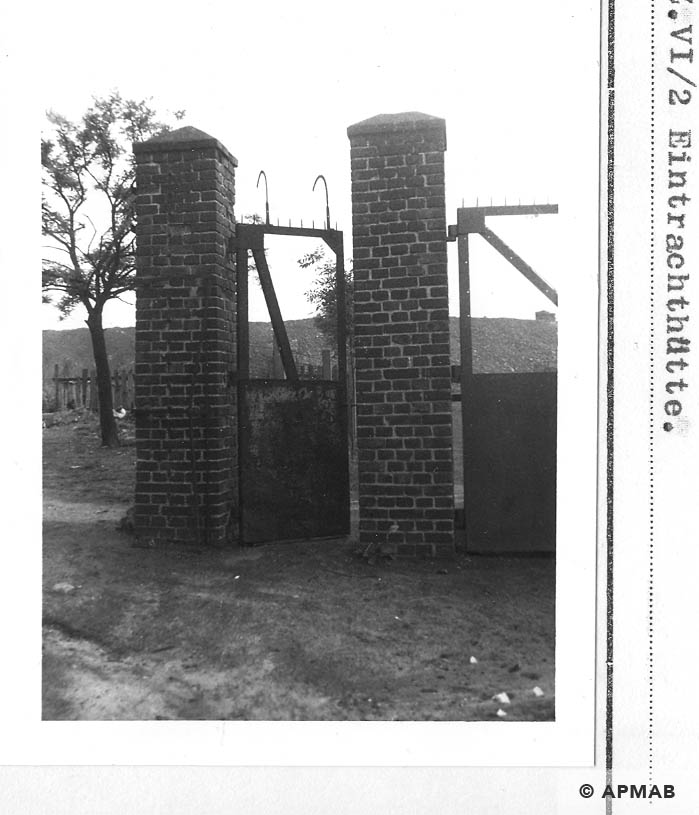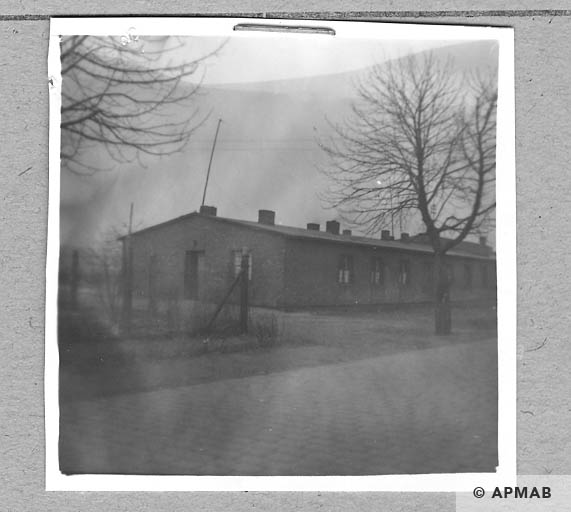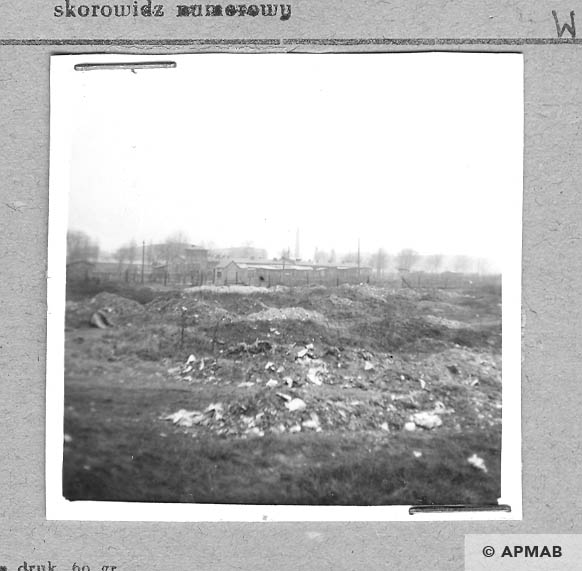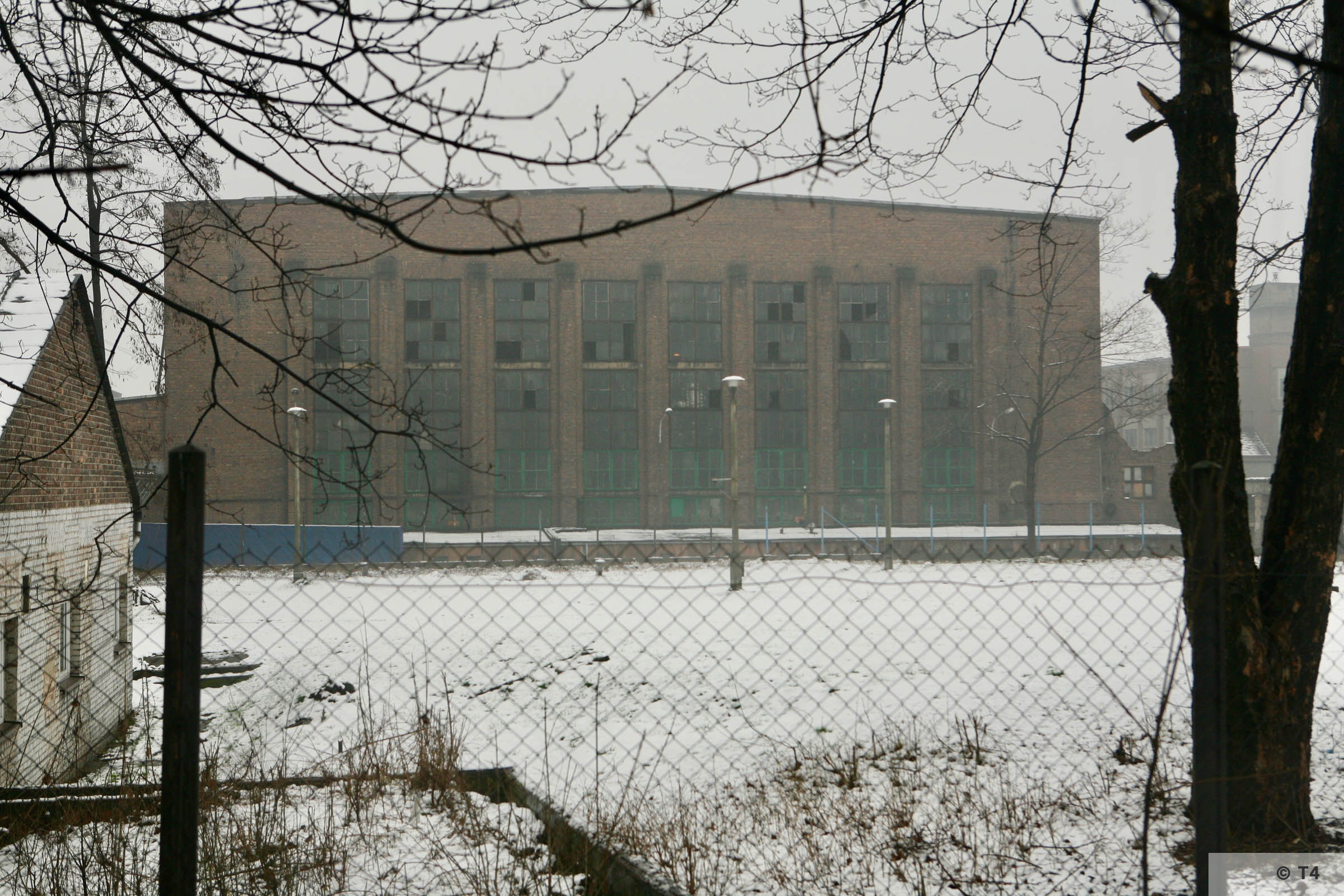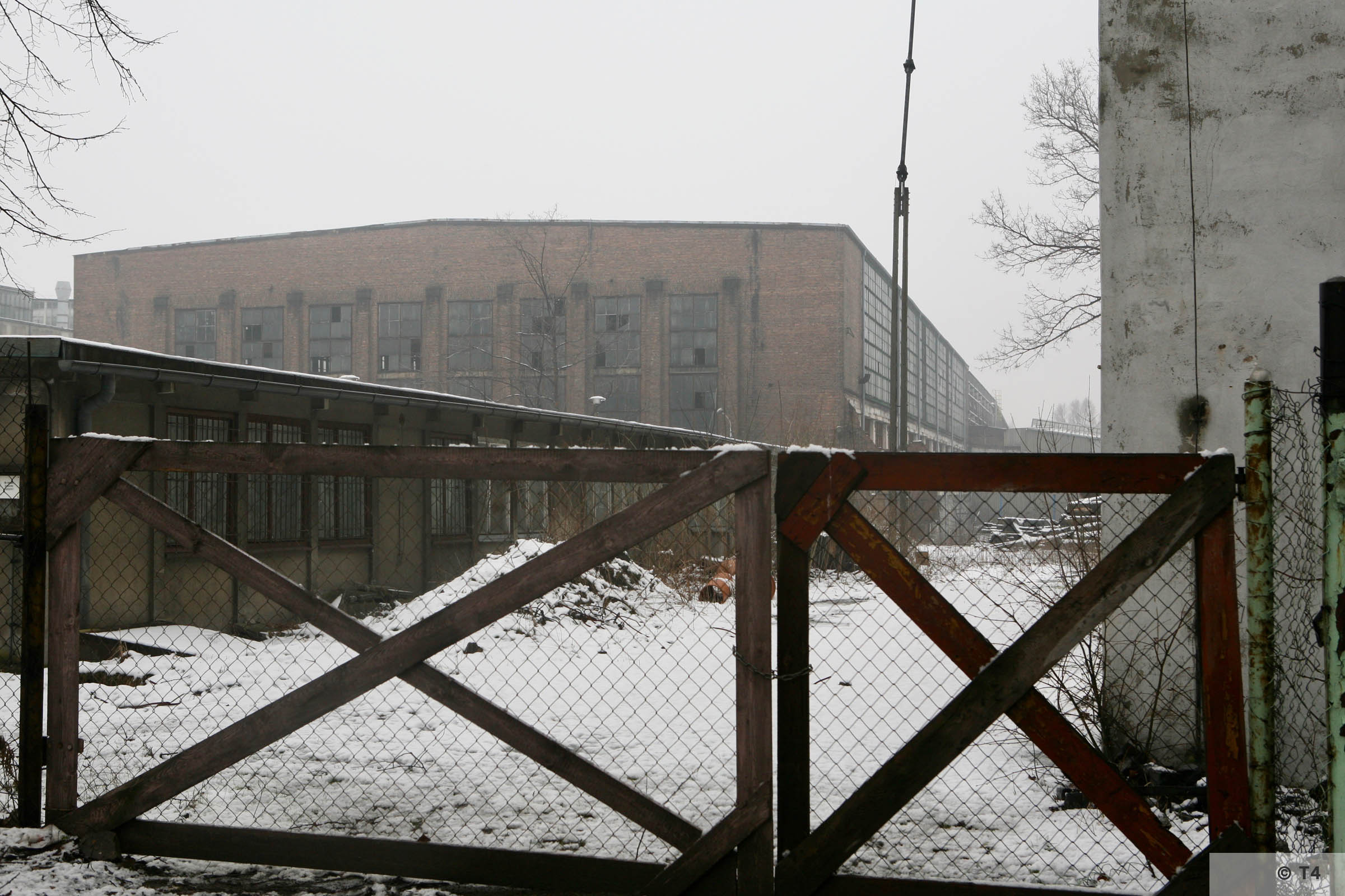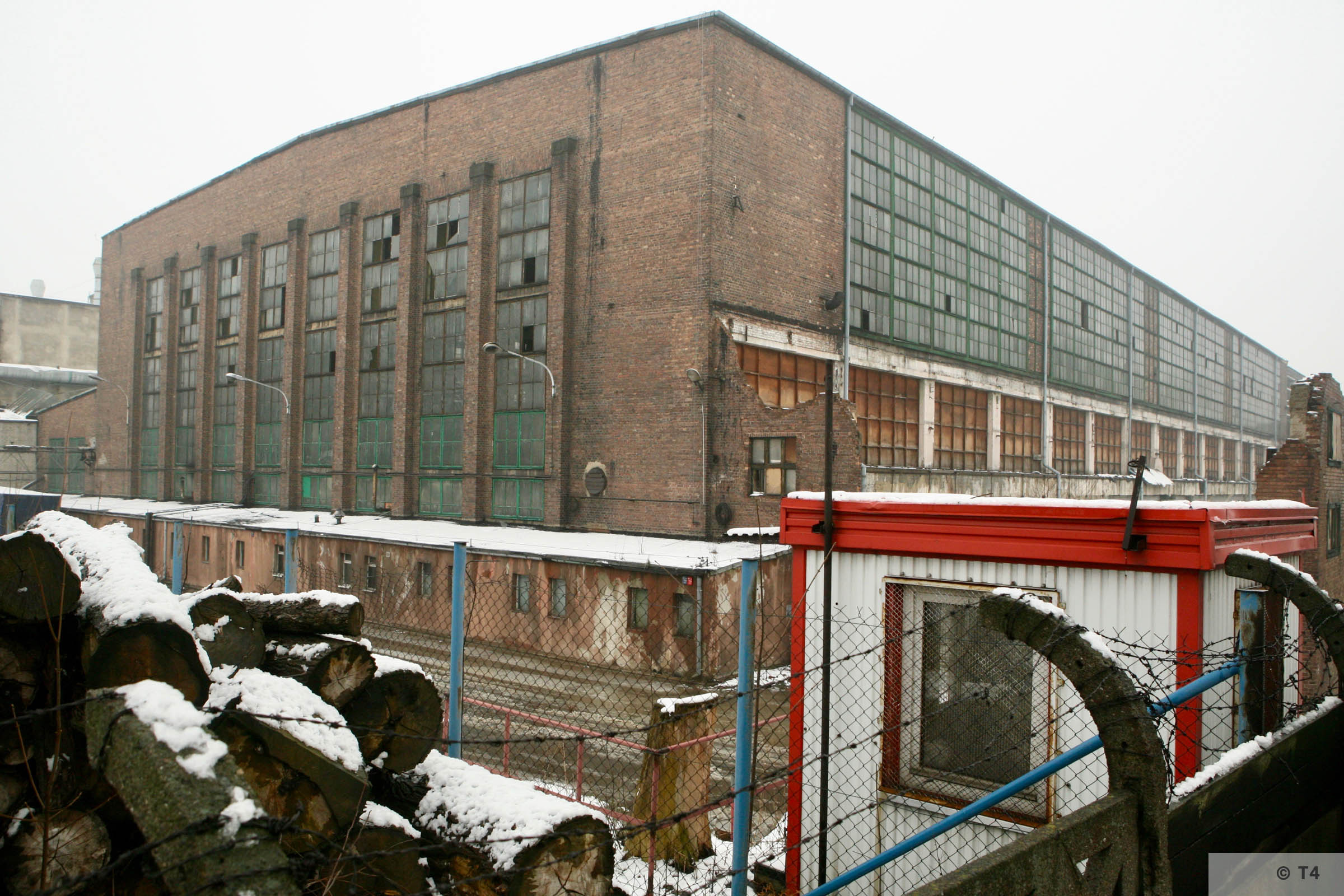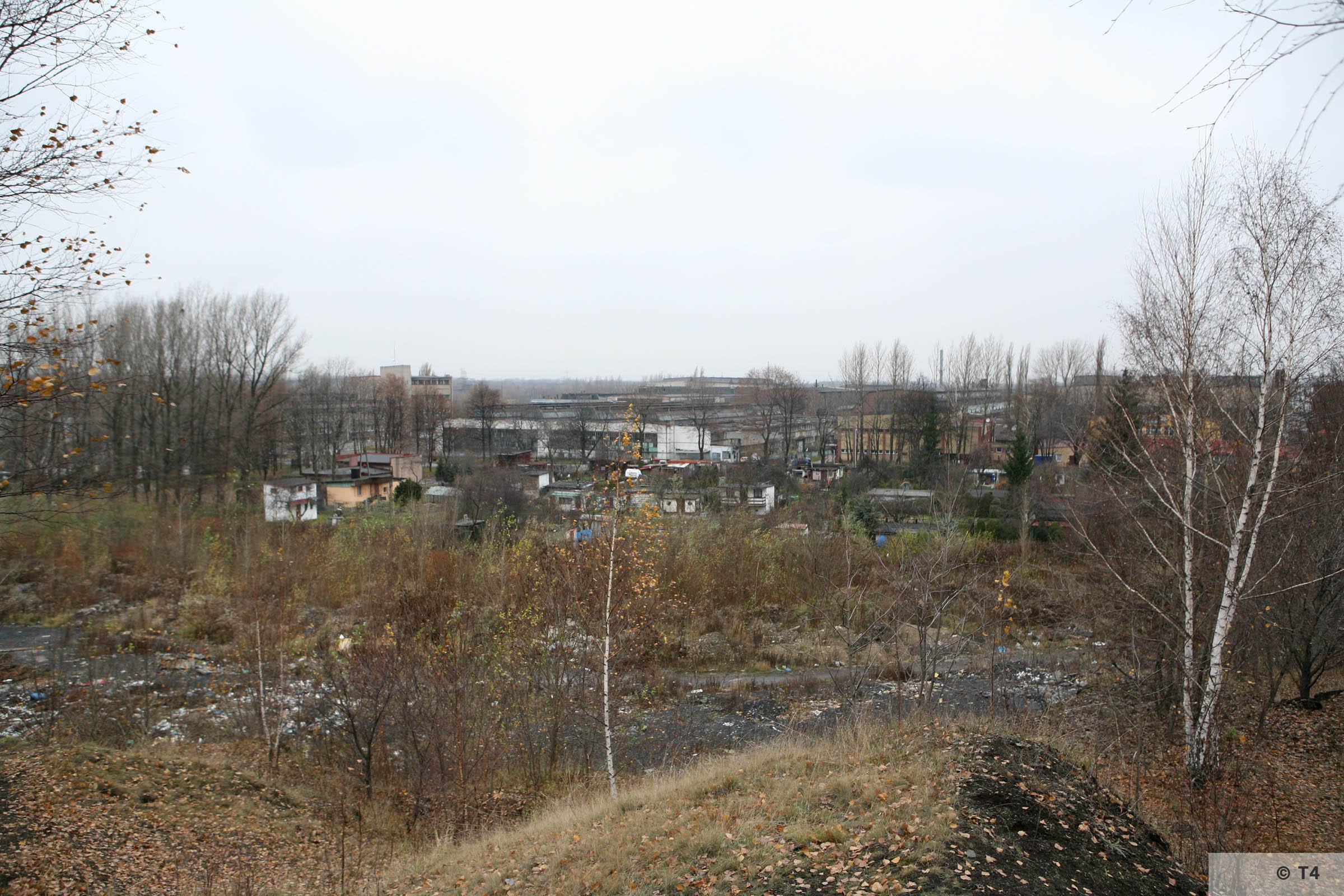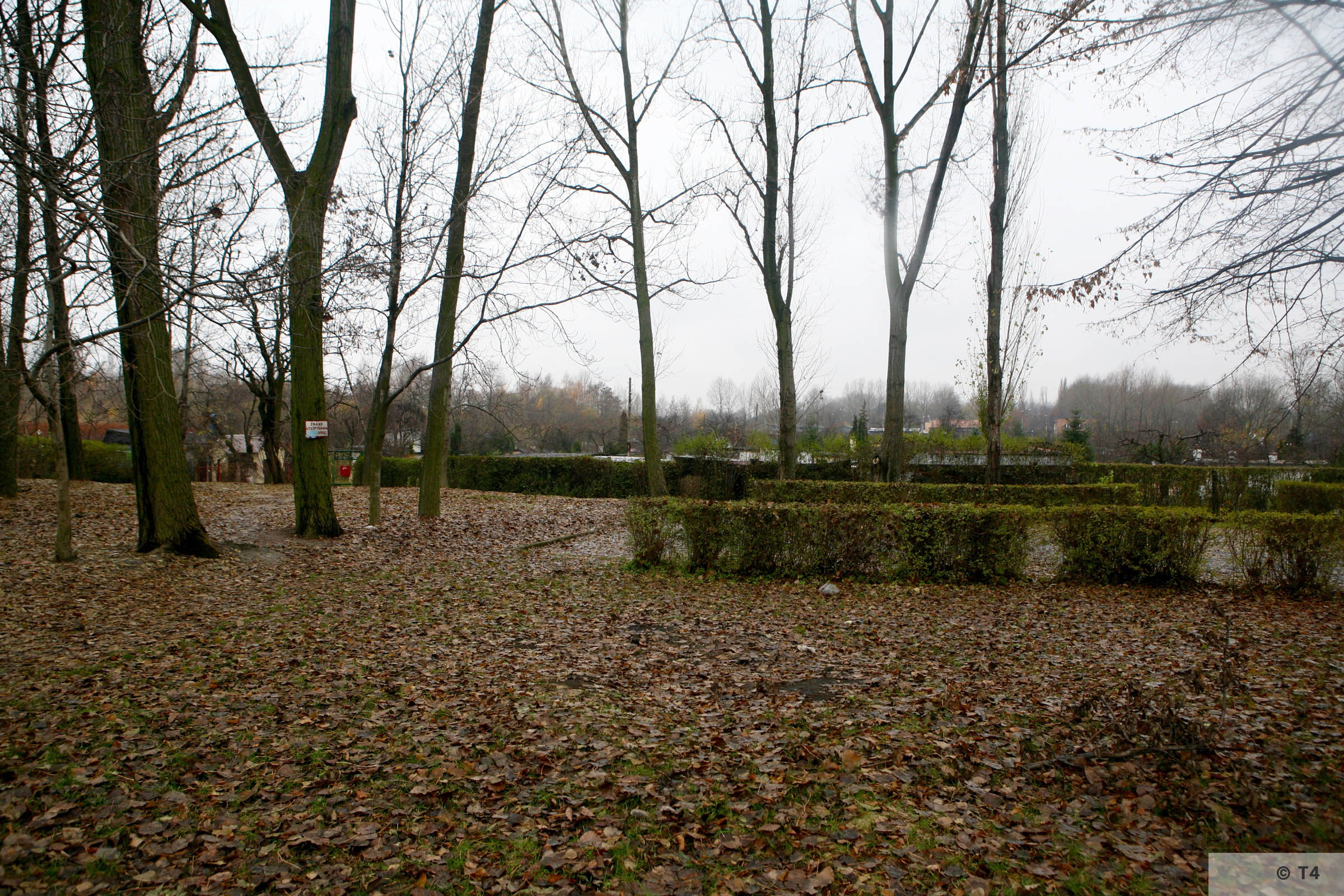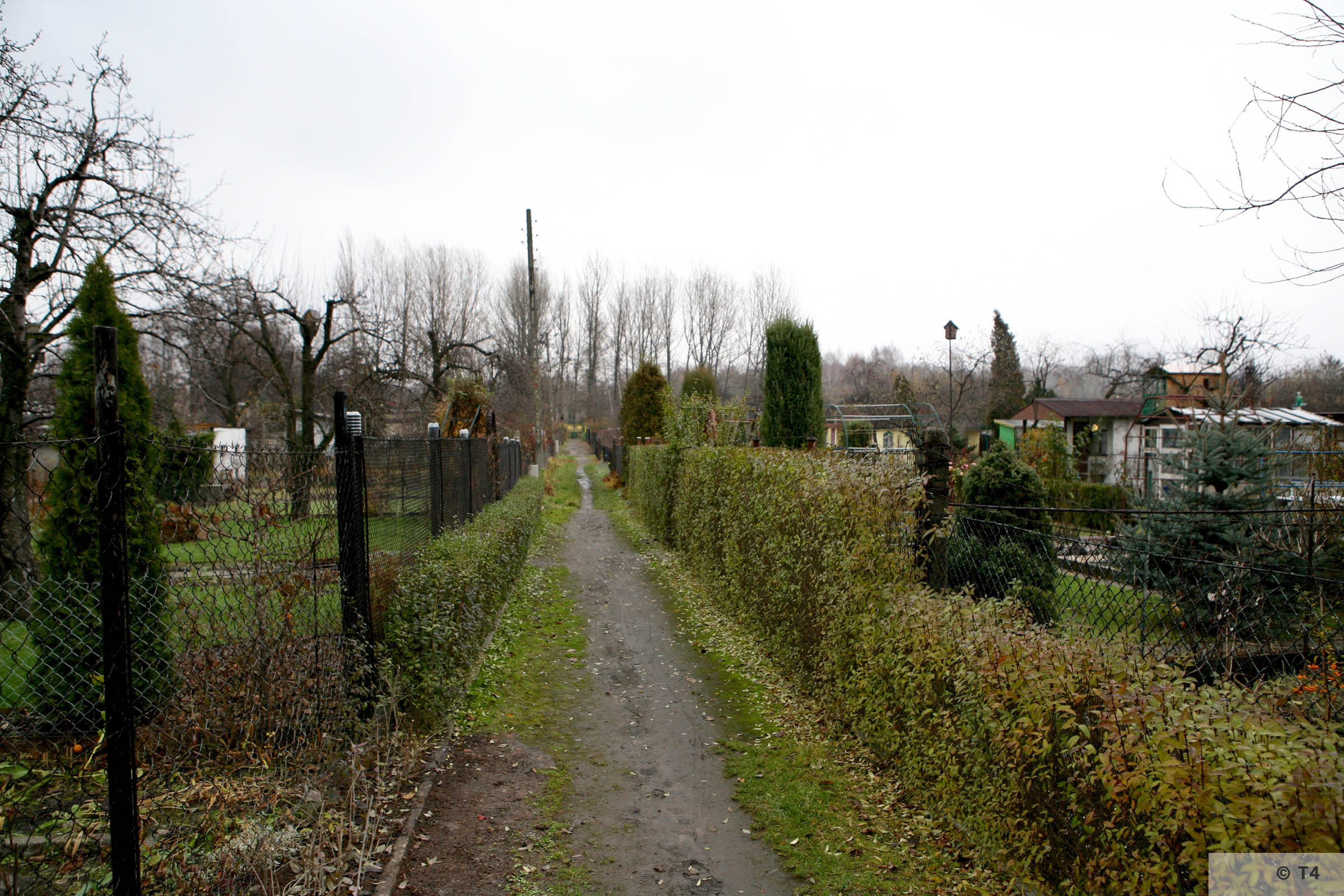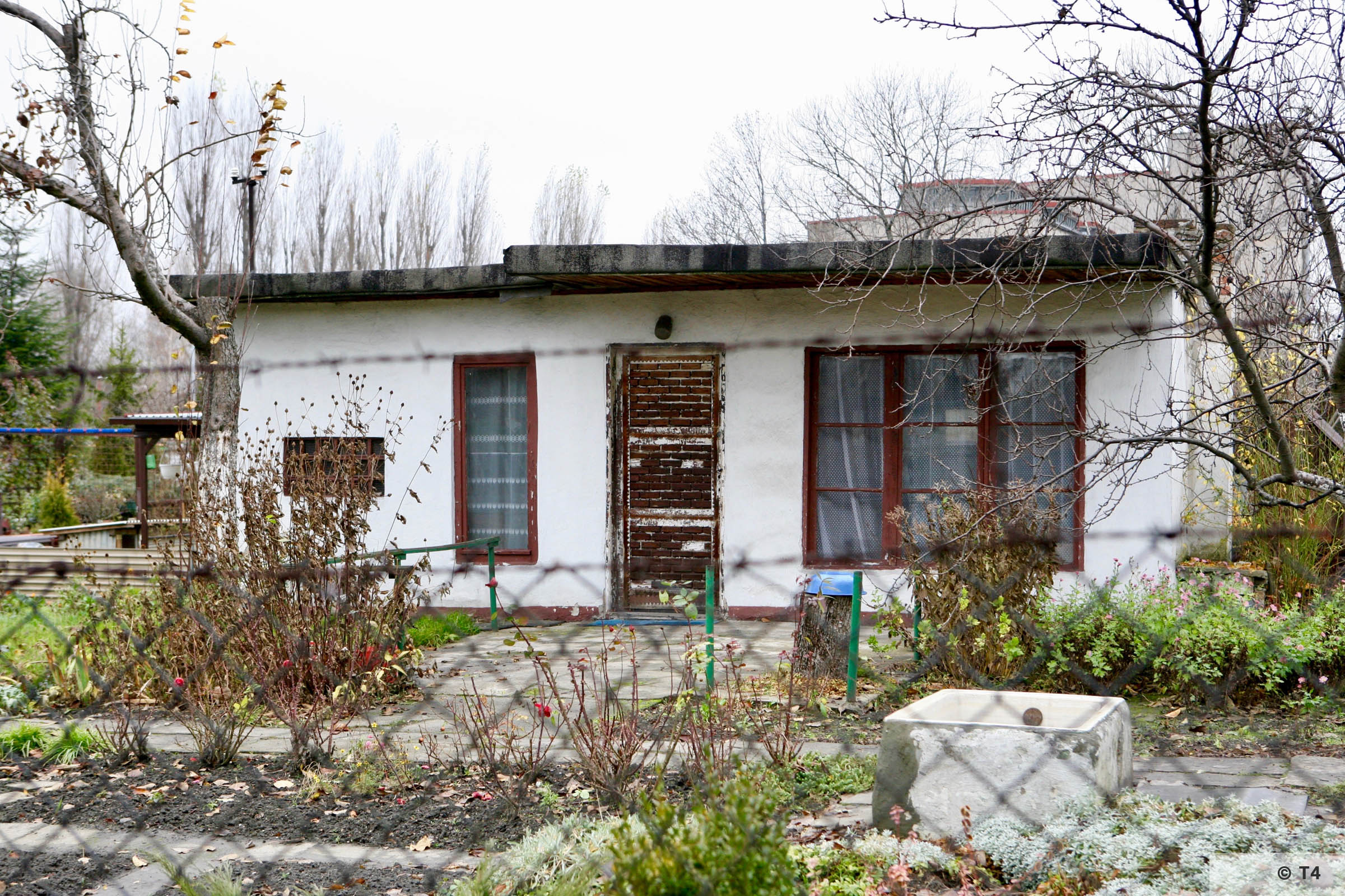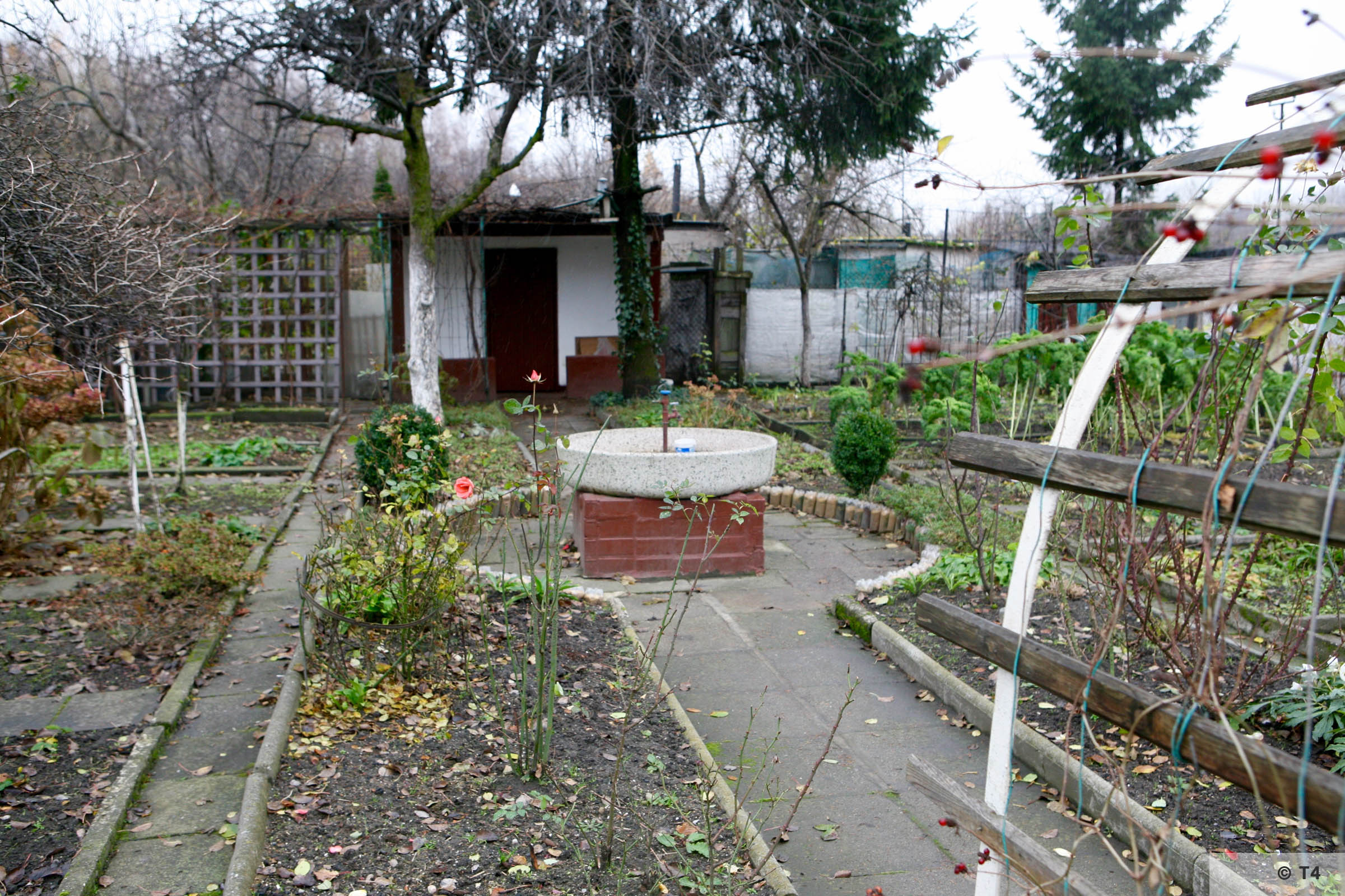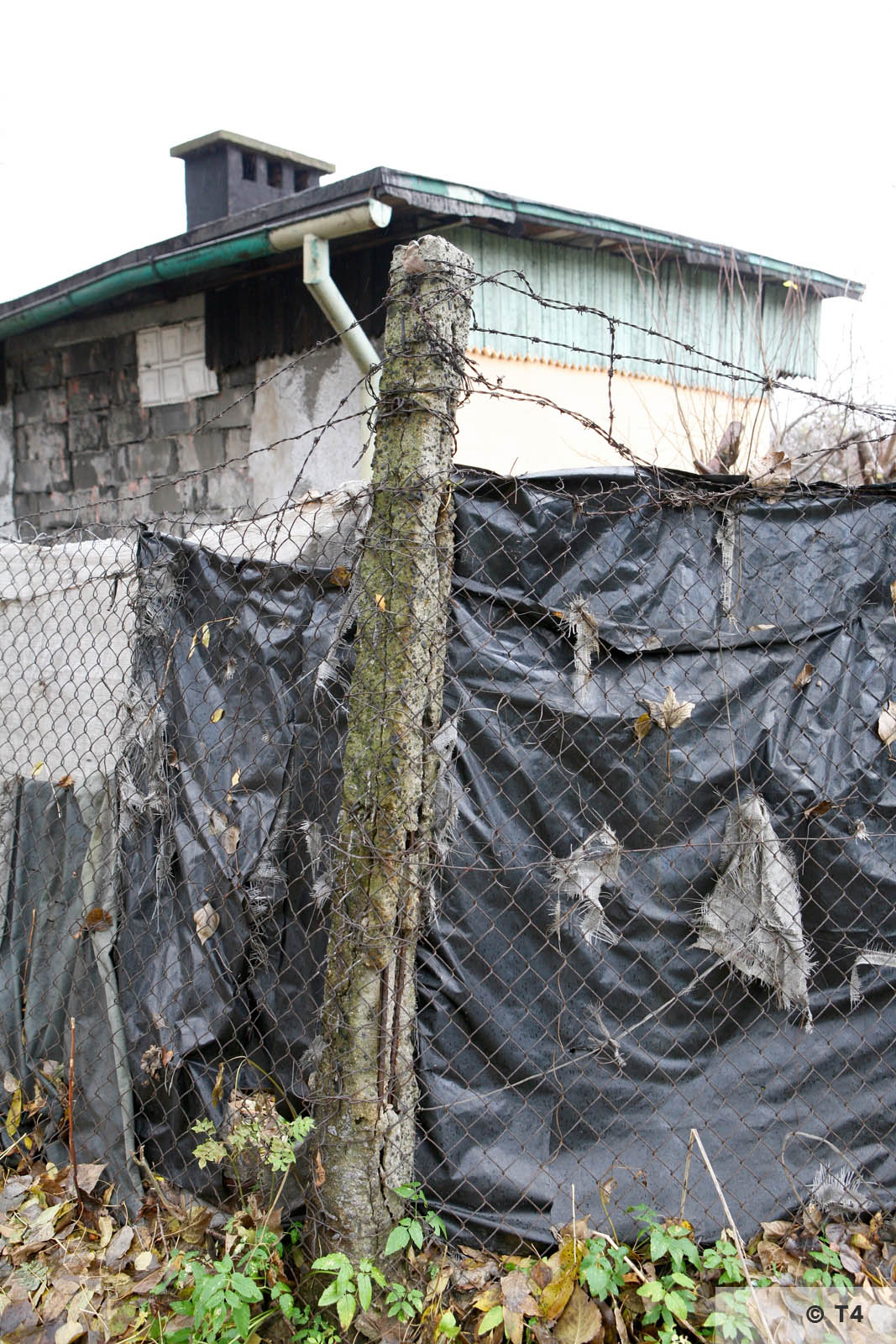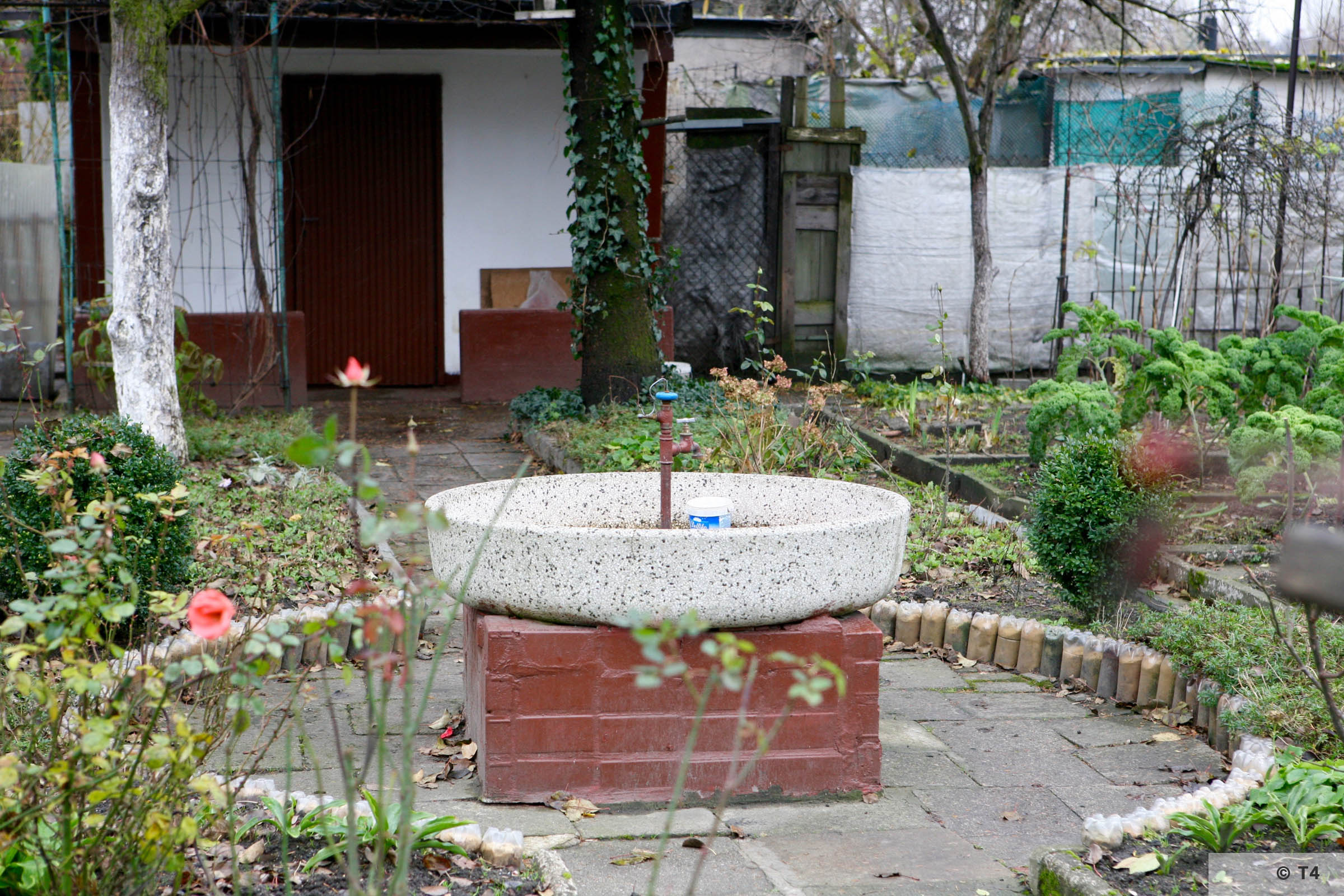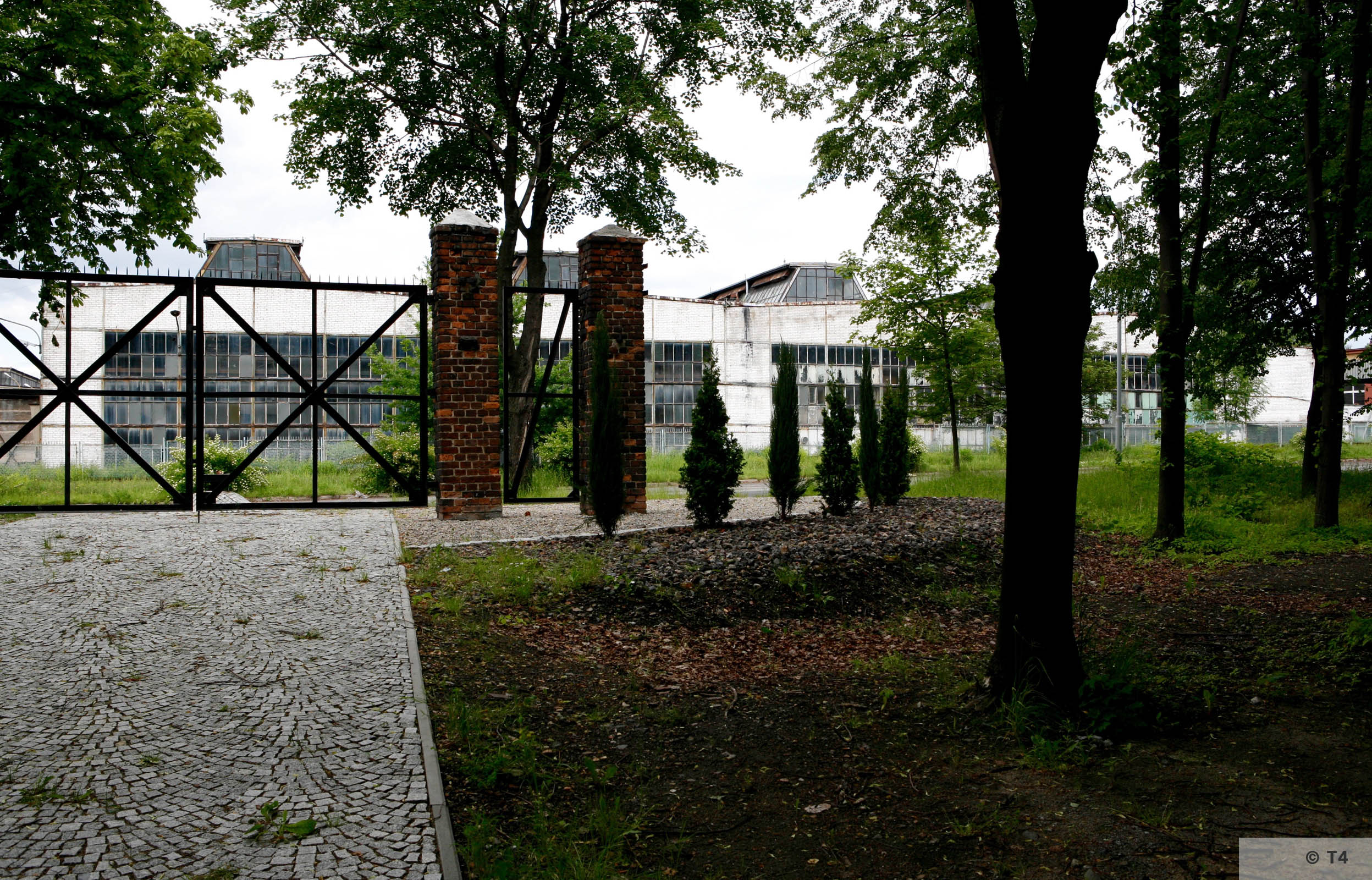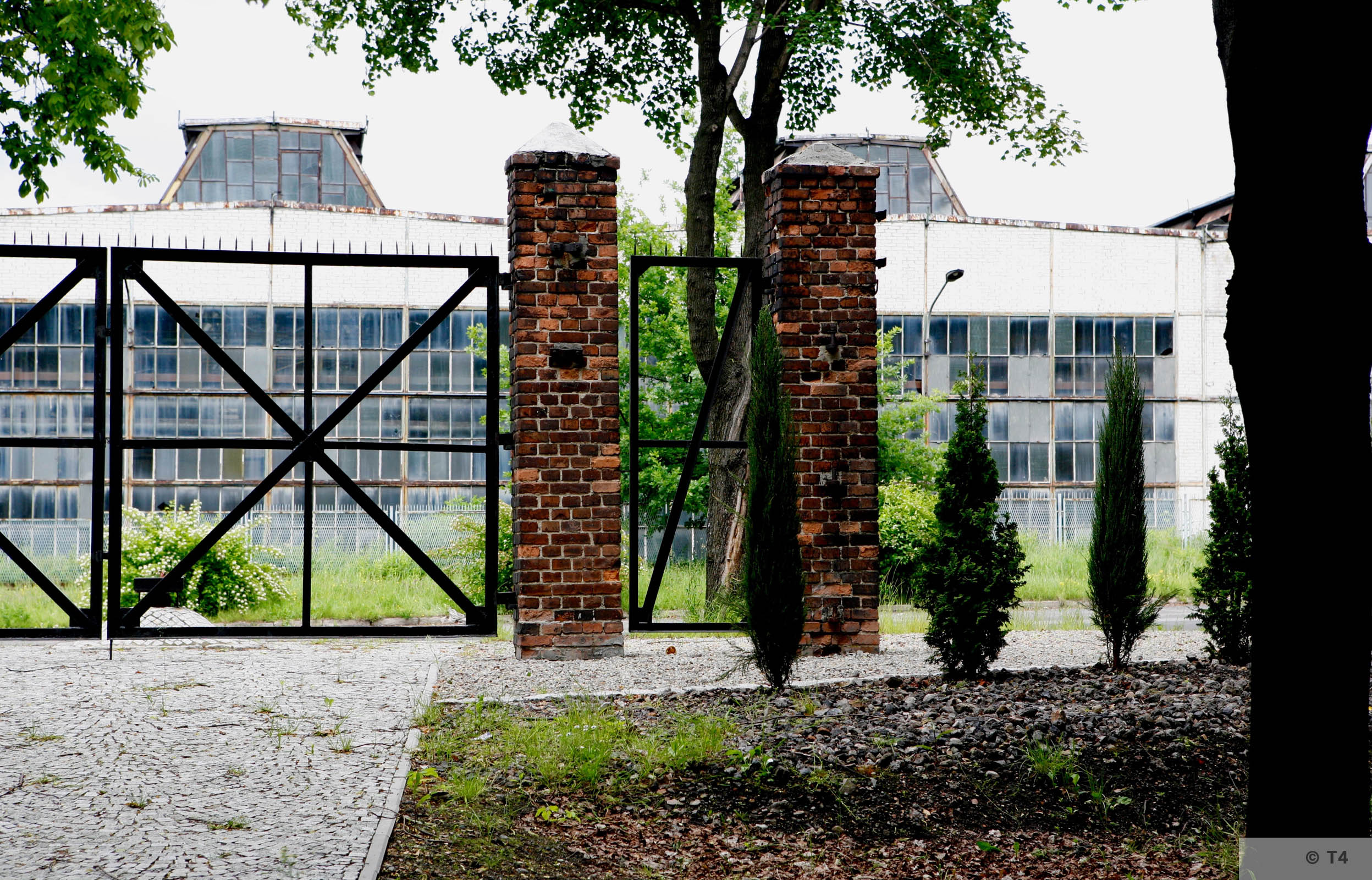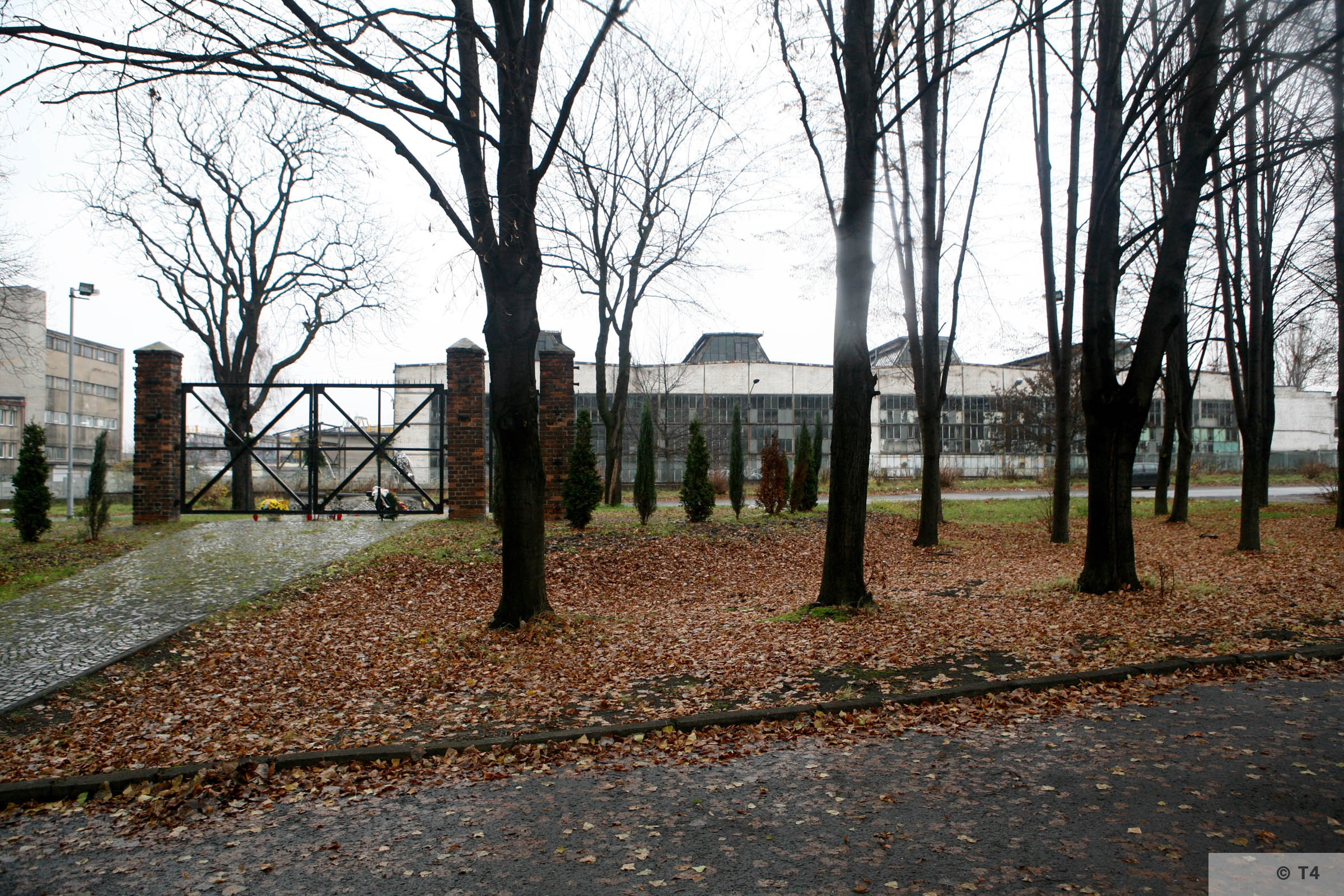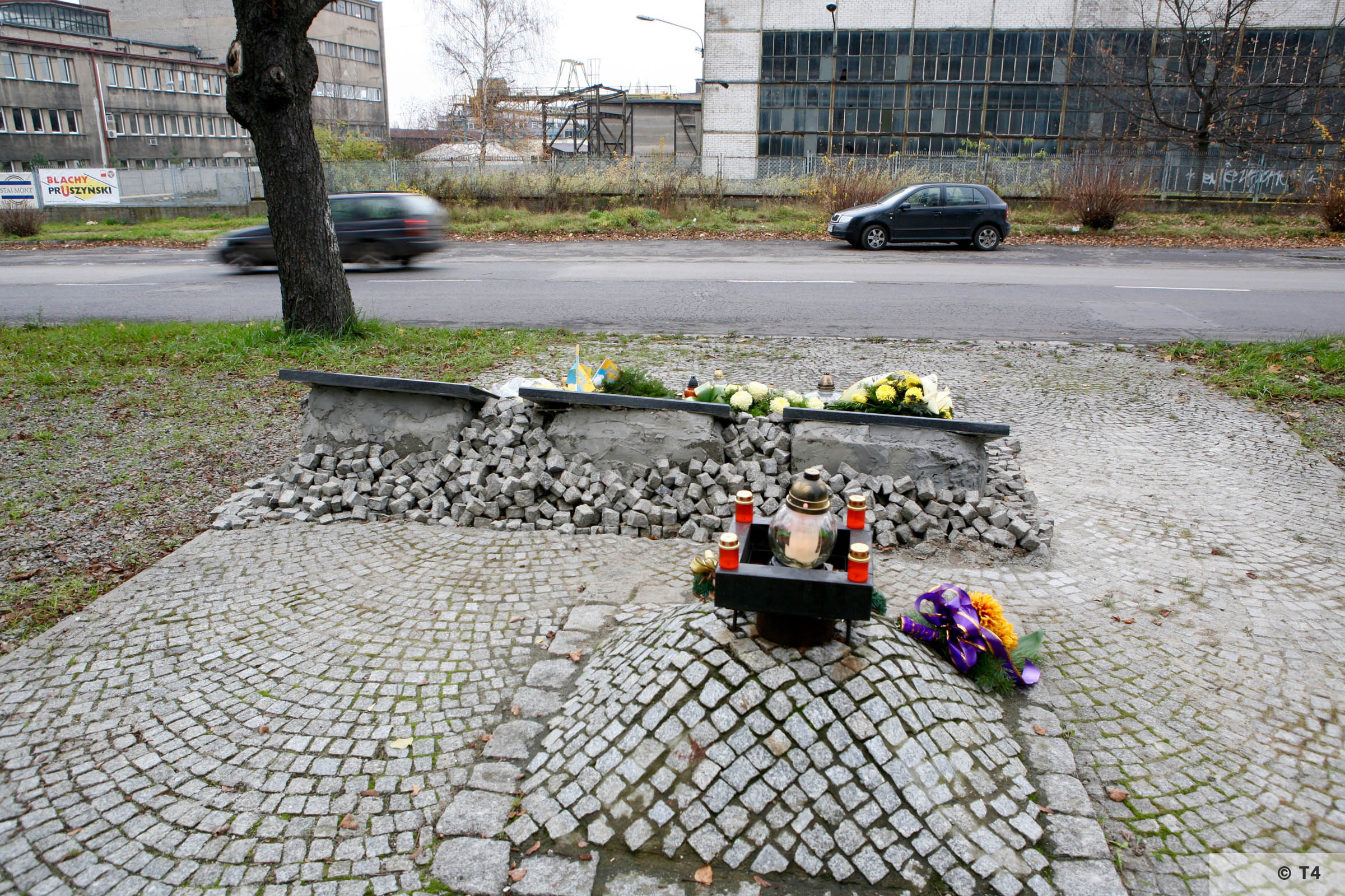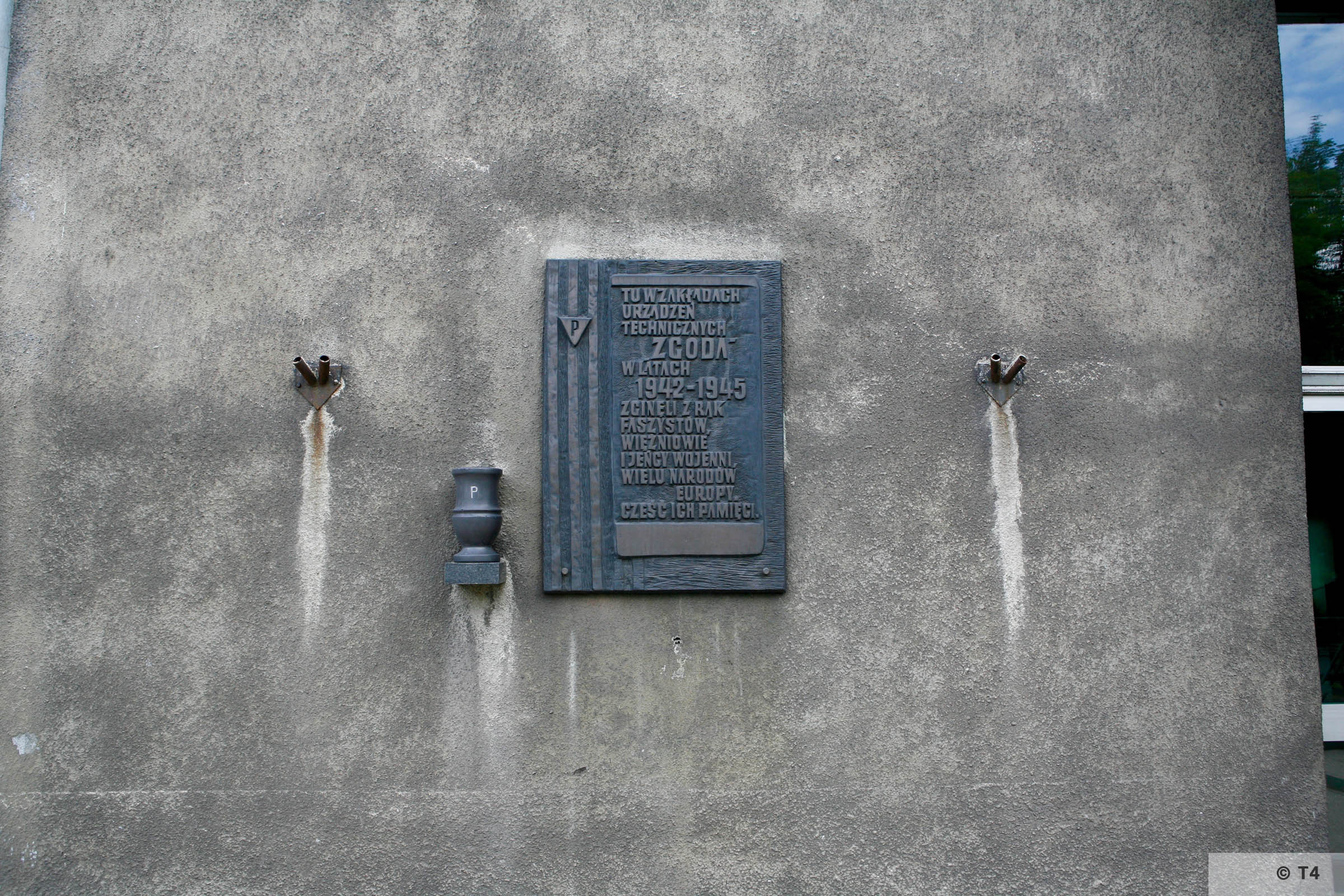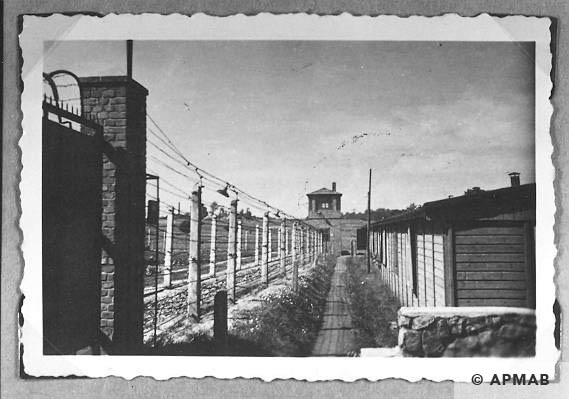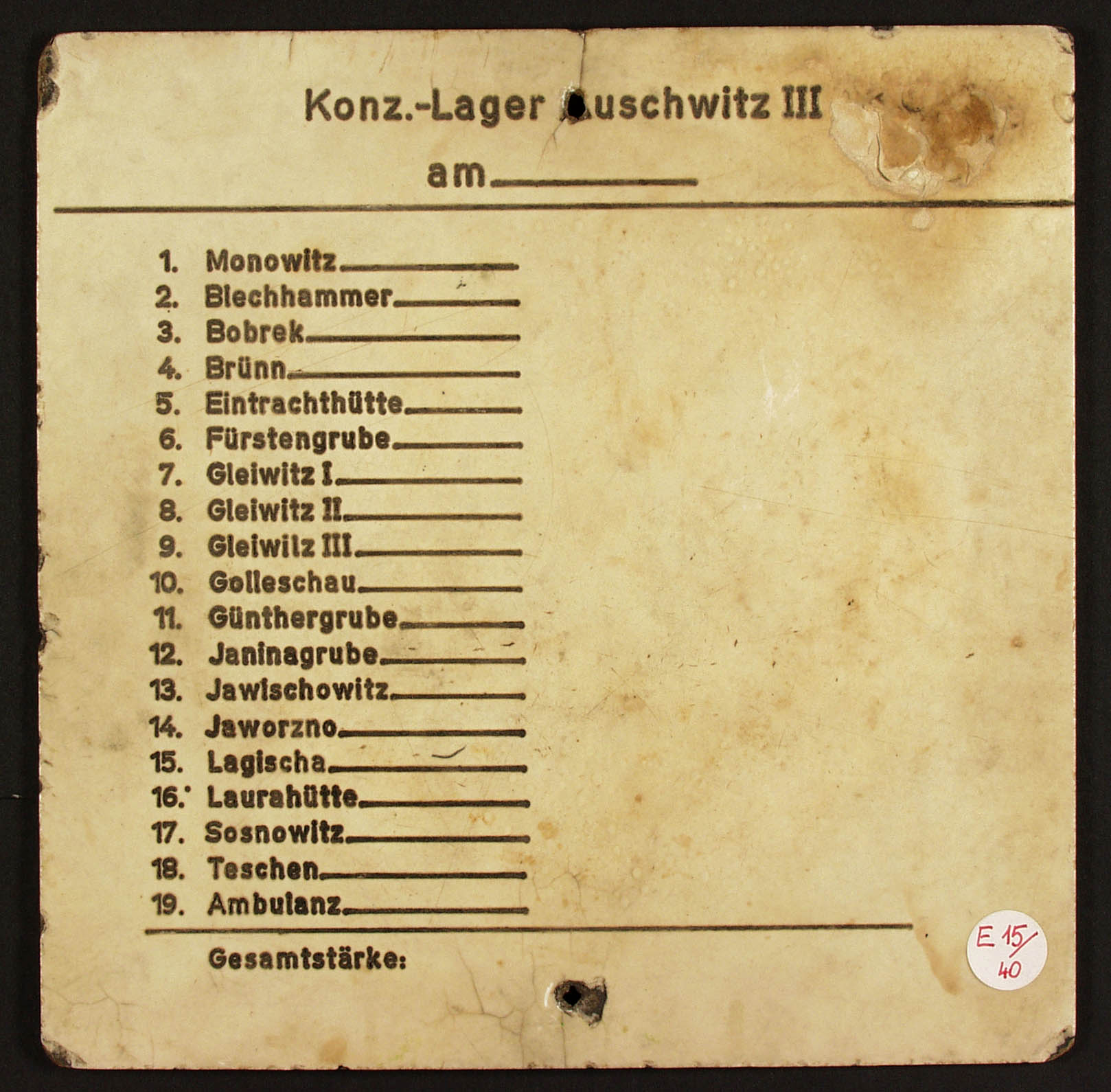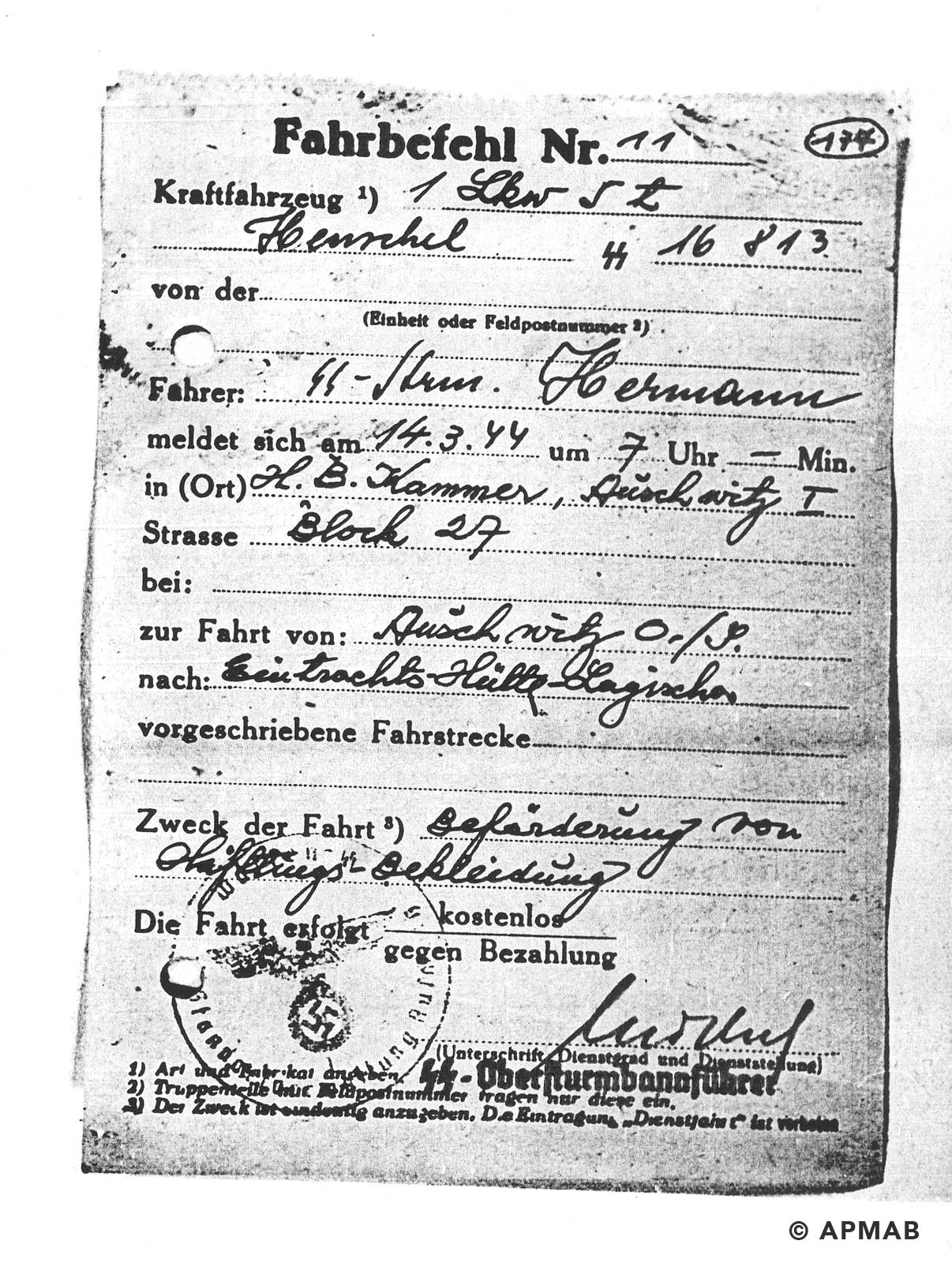Eintrachthütte
Other Name of the camp
Arbeitslager Schwientochlowitz
Konzentrationslager Eintrachthütte
Commandant of the camp
SS-Hauptscharführer Josef Remmele: May 1943 to July 1944
SS-Hauptscharführer Wilhelm Gehring: July 1944 to 23 January 1945
Number of SS Guards
Around 60 guards from the 5th Wachkompanie Monowitz and former Wehrmacht and Luftwaffe men from the 8th Sentry Company Auschwitz.
Work type
Steel Works: Production of anti-aircraft guns in the Eintracht mill.
Employer
Oberschlesische Maschinen und Waggon-fabrik AG (OSMAG) part of Berg- und Hüttenwerksgesellschaft Teschen (Berghütte)
Ost Machinenbau GMBH
Subcontractors:
Firma Grün u. Bilfinger
Firma Holzmann, Posen
Königshütter Metallwerke
Sub camp buildings
Originally the camp was a forced labour camp for Jews.
Number of prisoners
Between 400 and 1,374 male prisoners. 1,297 on 17 January 1945.
Nationality of prisoners
Non-Jewish Poles and Jews from of various nationalities including from the Polish ghettos, France, Belgium, Greece and Hungary.
Period of camp existence
26 May 1943 – 23 January 1945
Dissolution / Evacuation of the sub camp
On 23 January 1945 the camp was evacuated and all prisoners were transported to Mauthausen concentration camp.
Dates of site visits by Tiergartenstrasse4 Association
June 2006, November 2006, March 2007 and November 2007
Memorialisation
In 1970 near the main entrance to the new administration building of the steel works, a bronze plaque with elements symbolizing the prisoners camp striped uniform and an inscription in Polish was erected. The former sub camp gate is now a monument opened in 2005. In 2007 stone tablets where placed in front of the gates with information on the Auschwitz sub camp and the penal camp in Świętochłowice.
Explore more
The History
The history of the companies and the places prisoners worked, the sub camps, the SS guards and memorialisation of the sites.
The History of the Eintracht Steel Works
After the opening of the Kłodnicki Canal in 1808, Saxon Count Detlev von Einsiedel from Mückenberg and Franz Anton Egells built a steel mill near the canal.
The name of the steel mill changed frequently during the years. Initially it was called Graflich von Einsiedel’sches Societäts Eisenwerk, later Eintracht-Hochofen-Etablissement and finally Eintrachthütte.[1] In 1851 Egells bought the shares of Einsiedel and became the sole owner of the plant. In the years 1871–74, the annual turnover of the smelter was 1 million marks, with approximately 700 employees. In 1871 Egells had to sell his shares to a German company.
After the First World War, sections of Upper Silesia in 1922 became part of the newly formed Polish Republic in 1922. The Eintracht steel works which had changed its name to Zgoda became part of Górnośląskie Zjednoczone Huty “Królewska i Laura” Towarzystwo Górniczo-Hutnicze which owned the “Królewska” smelting works in Królewska, Huta Laura in Siemianowice Śląskie, and the Zgoda smelting works in Świętochłowice). [2]
Just before the outbreak of the Second World War there were four conglomerates in Poland including Wspólnota Interesów dla Katowickiej S.A. i Zjednoczonych Hut Królewska i Laura which owned: Huta Piłsudski (formerly Huta Królewska), Huta Laura, Huta Zgoda, Mechanical Workshops at the Huta Królewska. Factories manufacturing Fitzner screws and rivets in Siemianowice, Huty Bismarck, Huta Falva, Huta Silesia and Huta Hubertus. [3]
The huge machinery and industrial plant from the pre-war period, Huta Zgoda immediately aroused the interest of the Nazis. After the seizure of Siemianowice Śląskie by the German Army in 1939 they took over the plant and reorganised it to manufacture anti-aircraft guns.
From 1940-1942 the Zgoda plant, whose name had already been changed to Eintrachthütte was owned by IG Betriebsgemeinschaft Bismarckhütte, which in turn became part of Berg-und Hüttenwerks Gesellschaft Teschen (Berghütte). In the organisational structure Eintrachthütte was directly subordinated to the Oberschlesische Maschinen und Waggon-fabrik AG (OSMAG). From September 1942 part of the plant was directly under the authority of the Ost-Maschinenbau GmbH. [4]
Due to a lack of manpower Eintrachthütte began to import workers from other areas. In 1941, Poles were brought from the General Government, and in the following year at the plant were established a forced labour camp for 180 Jews (Rustüngslager Eintrachthütte), a Gemeinschaftslager for 600 foreign workers, in which there were about 400 workers from France and a POW camp for 300 Soviet prisoners of war. [5]
Despite this the steel plant still suffered from a lack of manpower. Negotiations began with the commandant of the Auschwitz concentration camp about the possibility of providing an appropriate number of prisoners for the Eintrachthütte plant in Świętochłowice. These talks eventually resulted in an agreement of 4 May 1943; Auschwitz would provide some 1,000 prisoners to be housed in a sub camp near the plant. [6]
[1] https://swietochlowice.naszemiasto.pl/zut-zgoda-burza-zaklady-urzadzen-technicznych-wideo/ar/c2-1997338. Viewed 15 August 2019.
[2] Jarosz-Nojszewska, Anna, Smelting Industry in the Second Republic http://kolegia.sgh.waw.pl/pl/KES/czasopisma/kwartalnik/Documents/AJN30.pdf. Viewed 15 August 2019.
[3] Jarosz-Nojszewska, Anna, Smelting Industry in the Second Republic http://kolegia.sgh.waw.pl/pl/KES/czasopisma/kwartalnik/Documents/AJN30.pdf. Viewed 15 August 2019.
[4] Piper, Franciszek, Podobóz Eintrachthütte [in:] Zeszyty Oświęcimskie [1975] Nr 17, p. 91-95.
[5] Piper, Franciszek, Podobóz Eintrachthütte [in:] Zeszyty Oświęcimskie [1975] Nr 17, p. 95.
[6] Piper, Franciszek, Podobóz Eintrachthütte [in:] Zeszyty Oświęcimskie [1975] Nr 17, p. 96.
The Post War History of the Zakłady Urządzeń Technicznych Zgoda (Formerly Eintracht) Steel Works
After the war the steel plant took the name Zakłady Urządzeń Technicznych Zgoda and became one of the most important steel mills in Poland. The steel plant products included: ship engines, hydraulic presses and lifting machines. In May 2008, the plant went into liquidation. [1]
[1] Information retrieved on August 7, 2019 from: https://www.imsig.pl/pozycja/2008/179/KRS/159429,ZAKŁADY_URZĄDZEŃ_TECHNICZNYCH_%22ZGODA%22_SPÓŁKA_AKCYJNA_W_LIKWIDACJI
The History of the Sub Camp Eintrachthütte
The Eintrachthütte sub camp was located on the site of a former forced labour camp for Jews. In taking over the camp the commandant of Auschwitz was responsible for making any necessary changes to adapt the former forced labour camp to a sub camp of Auschwitz. From May to July 1943 several transports of Auschwitz prisoners were transferred to Świętochłowice, who worked on reorganizing and developing the camp. Former prisoner Zygmunt Gajda, testified after the war: “In June 1943, I learned that a new commando was being put together somewhere outside of the camp. Colleagues advised me to sign up. Palitzsch, Schwarz and some high level doctor were recruiting for the new commando. I signed up as a locksmith. When the selection of the commando was finished, we were loaded onto four trucks (about 500 prisoners) and taken away in an unknown direction. Before leaving, we were given new striped uniforms, caps, coats, socks, gloves, 20 cigarettes, 30 dkg of sausage and 1 kg of bread for 4 people. In addition, we also got buckwheat with bacon and a mess tin of soup. It was forbidden to take any writing material and pencils with you. We were told not to dare to run away, that we would be better off there and those who did well would be sent back home earlier. I remember we travelled through Katowice, Świętochłowice and finally arrived at a camp. It was the Eintrachthütte Auschwitz sub camp. At the time, four Jewish barracks were located in the camp. There were already 300 or more prisoners who had been brought there before us. First, we were employed in clearing up the camp, disinfecting barracks, which were terribly dirty and infested with bugs. Disinfection consisted of sealing windows and doors and then letting gas in. Then we carried stones to the camp with which we laid on the assembly ground. Walking in uncomfortable clogs we carried heavy 50 kg stones on our shoulders,. At first, the area of the camp resembled a sea of mud. Then we built the foundations and built more barracks.” [1]
Hieronim Kolonko a former prisoner also testified after the war on arriving in Eintrachthütte. “I don’t remember the exact date in July 1943, I was sent with a large group of about 2,000 prisoners to the branch of the Auschwitz camp in Świętochłowice. We travelled by train. We were almost all professionals, because we were supposed to work in an arms factory – anti-aircraft guns were produced there. When we arrived we found only fenced in barracks, probably used previously by some other prisoners. Everywhere there was thick mud, which we waded in half-way up to our calves. We fenced in the area, built watchtowers, and brought stones from the factory to pave the sidewalks. We also built 2 barracks for the SS men.”[2]
Up until September 1943 the prisoners totally rebuilt the former forced labour camp, which was now surrounded by a double row of electrified barbed wire hung on concrete posts. In the four corners solid brick guard towers were constructed. The main entrance to the camp was on the street, in front of the Eintrachthütte plant. The camp entrance was a tall, iron gate suspended on brick pillars. Spotlights were installed along the fence and on the guard towers. Inside the camp there were a few barracks, economic barracks, infirmary, kitchen, and latrines. Outside the fence, just off the road, two large barracks were built: one was a guard house and camp offices, in the second were the living quarters for the SS guards. [3]
The number of prisoners in the sub camp Eintrachthütte was around 400 at the time of its creation in June 1943. The number of prisoners increased gradually until August 1944 it reached its peak of 1,374. On 17 January 1945 there were 1,297 prisoners in the camp.
The prisoners were accommodated in wooden barracks, and slept on three-tier bunks with a mattress and blankets. The barracks were also equipped with tables and benches and stoves which due to a lack of fuel were rarely operational.
In addition to the brutality and harassment from the guards, hard work and generally onerous conditions, the prisoners also suffered from severe hunger: “The food was very bad. In the morning we received tea or rather a concoction of herbs, and we had received bread the previous day for that day. Of course, this bread we usually had eaten the previous day for fear of it being stolen at night, and of course from hunger. If the SS noticed in the morning that we did not have bread, because we had eaten it the previous day, they beat us. The soup was brought in at noon and served to us during the lunch break. We should have received 1 litre of soup and in fact we were poured a quarter of a litre or half a litre. In addition, the blockleader stole the soup, e.g. in the presence of an SS man a margarine cube was thrown into the cauldron. When the formalities were done, the SS man left, then the blockleader took the cube for his own use. In addition, when distributing soup to his colleagues he gave some thick soup from the bottom of the cauldron to some and to others basically water. Sometimes, 3-4 potatoes still in their skins were given to us for dinner. These potatoes were usually rotten and were only suitable for a distillery. On Sunday, the unemployed did not receive bread and the patients only got half of their rations.”[4]
Prisoners of the sub Eintrachthütte were employed in nearby factories, including the Eintrachthütte steel plant. They worked in two shifts: dayshift 06.00 hrs to 18.00 hrs and nightshift from 18.00 hrs to 6.00 hrs. The prisoners who worked in Eintrachthütte steel works were divided into Kommandos and worked in several halls of the plant on assembly lines for the individual parts of anti-aircraft guns.
[1] APMAB. Zespół Oświadczenia, testimony of Zygmunt Gajda, Vol. 75, p. 67.
[2] APMAB. Zespół Oświadczenia, testimony of Hieronim Kolonko, Vol. 75, p. 108.
[3] Franciszek, Piper, Podobóz Eintrachthütte [in:] Zeszyty Oświęcimskie [1975] Nr 17, p. 99-101.
[4] APMAB. Zespół Oświadczenia, testimony of Zygmunt Gajda, Vol. 75, p. 69 – 70.
Literature:
Franciszek, Piper, Podobóz Eintrachthütte [in:] Zeszyty Oświęcimskie [1975] Nr 17, p. 91-153.
The SS Guard Unit
The first Lagerführer of the sub camp was SS-Hauptscharführer Josef Remmele, who was remembered as an exceptional sadist. Remmele was dismissed as Lagerführer after the successful escape of prisoners in July 1944. His successor SS-Hauptscharführer William Gehring was as ruthless and sadistic as Remmele. Stanisław Szczęsnowicz testified, “Wilhelm Gehring I know personally as a Lagerführer in the Eintrachthütte camp in 1944–45. He behaved violently towards the prisoners for any reason whatsoever or even no reason. He beat and kicked the prisoners. His favourite form of “entertainment” was to place prisoners between the electric wires (fences), where the victim had to stay for two days and two nights without food. He took part in executions, beating and torturing the prisoners immediately before putting them on the gallows. He fulfilled his duties so lovingly that he was among the last to evacuate the camp to Mauthausen, and on the way he saw to it that many of the prisoners lost their lives.”[1]
The other sub camp personnel: as Rapportführer the SS men Kleemann and Kurt Knut, kitchen manager SS-Unterscharführer Werner Paschke, paramedics SS-Rottenführer Alksandeer Godwinski and SS-Oberscharführer Franz Wloka. In the Eintrachthütte sub camp there were about 60 SS guards. [2]
[1] Testimony of Stanisław Szczęsnowicz 19 September 1947 viewed 9 August 2019. https://www.zapisyterroru.pl/dlibra/publication/3194/edition/3175/content
[2] Piper, Franciszek, Das Nebenlager Eintrachthütte, [in:] Hefte von Auschwitz [1985] Nr 17, p. 91-155.
Literature:
Piper, Franciszek, Podobóz Eintrachthütte [in:] Zeszyty Oświęcimskie [1975] Nr 17, p. 91-153.
The SS Guards
References:
BA Ludwigsburg B162/2680 and B162/2679.
Zppw-auschwitz.pl Zwiazek Polaków Pomordowanych w Auschwitz. List of 8,500 SS men in KL Auschwitz.
IPN database of Auschwitz SS guards. https://truthaboutcamps.eu/th/form/60,Zaloga-SS-KL-Auschwitz.html
Piper, Franciszek, Podobóz Eintrachthütte [in:] Zeszyty Oświęcimskie [1975] Nr 17, p. 91-153.
Piper, Franciszek, Das Nebenlager Eintrachthütte, [in:] Hefte von Auschwitz [1985] Nr 17, p. 91-155.
The Evacuation of the Sub Camp Eintrachthütte
The evacuation of sub camp Eintrachthütte began on December 3, 1944 when some of the prisoners were transported back to the Auschwitz-Birkenau concentration camps and then to Mauthausen concentration camp.
The second phase of the evacuation took place on January 23, 1945 when without warning the prisoners were ordered from their work, told to pack up their belongings and marched to the railway station in Świętochłowice. At night they were loaded onto cattle trucks and transported to Mauthausen concentration camp. The evacuation was recalled by former prisoner Jerzy Rogocz: “We travelled in terrible conditions – people were going to a bucket which was standing in the middle of the wagon. However, it was not enough, there was nowhere to pour the contents so that it flooded the wagon. I had 2 blankets with me, which I tied to the ceiling and arranged a kind of hammock. Thanks to that I also had some air coming in from the tiny window. Besides, I could watch which way we were going. We travelled for 6 days. At that time we only got bread. We didn’t receive any water, that’s why we just ate snow. I saw about 30 corpses unloaded from the wagons upon arrival. In addition, the corpses were removed at stops (on the way). Upon arriving in Mauthausen, some prisoners were called out and searched. Some were abused. They terribly beat Jakub, who worked in the Bekleidungskammer and some other half-Jew. Jakub hanged himself at night.”[1]
Within the sub camp were left dozens of sick and prisoners unable to travel who remained until liberation. [2]
[1] APMAB. Zespół Oświadczenia, testimony of Jerzy Rogocz, Vol. 75, p. 99.
[2] Piper, Franciszek, Podobóz Eintrachthütte, [in:] Zeszyty Oświęcimskie [1975] Nr 17, p. 91-153.
Literature:
Piper, Franciszek, Podobóz Eintrachthütte, [in:] Zeszyty Oświęcimskie [1975] Nr 17, p. 91-153.
The Post War History of the Former Sub Camp Eintrachthütte
After the deportation of the Auschwitz prisoners, the Eintrachthütte sub camp was empty for only a few weeks. The headquarters of the Powiatowego Urząd Bezpieczeństwa Publicznego w Katowicach (Poviat Public Security Office in Katowice) was located in the city, and it proved opportune that the infrastructure of the former Eintrachthütte sub camp was intact. It is worth quoting a fragment of the technical inventory of the camp carried out by Salomon Morel – head of the Świętochłowice Camp, from the acceptance protocol of November 19, 1945. This information gives a very precise description of the camp that was to be the camp Penal Camp in Świętochłowice. Although this protocol was prepared just before the liquidation of the camp in November 1945, between February to November 1945 there were no major changes to the buildings and infrastructure of the camp, and so this description can be treated as synonymous with how the sub camp Eintrachthütte existed in January 1945. The protocol reads as follows: “The whole camp is equipped with electricity, water supply and sewage systems. The sewage and water supply system is connected to the administrative, security, smithy, bathhouse, hospital and laundry barracks. Other barracks are without water and sewerage. Electricity is supplied everywhere. AC lighting has 220 V. AC voltage 380 V. 500 V circular fence current, the latter transformed from Huta Zgoda. The double barbed fence around the camp consists of the following material: 39-wire perimeter of barbed wire. These are two fence lines placed on concrete poles at a distance of 1.5 meters from each other. The outer barbed wire line rests on 100 concrete poles, on which insulators are placed, and the inner line on 95 concrete poles. The barbed wire totals 23,500 running meters. Porcelain insulators 4,000, 51 pole lamps on the barbed fence with 40 watt bulbs. In addition, the camp has six 300-watt spotlights, four 200-watt spotlights and one 25-watt lamp on each barrack. The camp wiring is insulated with aluminium. The camp is equipped with 4 observation towers, 20 m3 each. They are brick, one-story with a length…, equipped with roofing felt, 2 guard towers at the entrance of 1.5 m3 made of concrete. 1 camp bunker of 35 m3 made of concrete, recessed into the ground, is currently in a unusable condition. One observation tower located at the front of the administrative barrack of 80 m3, made entirely of brick.” [1]
The exact date of the establishment of the camp in Świętochłowice is unknown. It is believed that it began operating in February 1945. [2] The camp was subordinate to the Department Więziennictwa i Obozów Ministerstwa Bezpieczeństwa Publicznego (Department of Prisons and Camps of the Ministry of Public Security). Initially, it was called the Penal Camp in Świętochłowice, and from mid-April, the Labour Camp in Świętochłowice (Obóz Pracy w Świętochłowicach).[3] The guards were armed officers of the Security Office, while Aleksy Krut and Salomon Morel served as the camp leaders. The latter, from June 1945, managed the camp alone.
The camp guards lived in a building outside the camp. At the time of the closure of the camp, 27 guards worked there. Prisoners‘ testimonies indicate that they lacked discipline, gave arbitrary punishments, and alcohol abuse often occurred. As a result of one of the guards died of alcohol intoxication.[4]
Prisoners were brought to the camp on foot, some by tram, and other prisoners from further parts of Upper Silesia were by rail. Prisoners were escorted to the camp by officers of the Security Office, Milicja Obywatelska (Citizens‘ Militia), as well as soldiers of the Red Army.
The vast majority of the prisoners in the camp were German Silesians, but also Poles, mainly from central Poland, and nearly 40 “foreigners”. The Polish prisoners were mainly persons associated with the independence organizations and the Armia Krajowa and Narodowe Siły Zbrojne (Home Army and the National Armed Forces). In August 1945, the most numerous group of prisoners were Germans, numbering 1,733 which constituted one third of all prisoners.[5] Young people under the age of 13 were incarcerated in the camp, as well as two children under the age of one and a half. A group of several hundred people over the age of 60 years were also in the camp. At the end of March 1945, there were already 1,062 prisoners in the camp, in May this number increased to 2,213, and in August there were 5,048 people recorded in the camp’s records.[6]
As it was a labour camp, the prisoners were employed in nearby factories. Every day they marched in columns under escort. Most of the prisoners worked in Huta Zgoda opposite the camp, where machines were dismantled and loaded onto the rail wagons. There were also female prisoners who cleaned the production halls. Prisoners were also sent to outlying factory labour camps.
The dissolution of the camp in Świętochłowice is directly connected with the order of Minister Stanisław Radkiewicz of September 15, 1945 regarding the settlement of matters of persons detained in places of detention, prisons and labour camps not subject to prosecution. At the turn of October and November 1945, a three-member commission led by prosecutor Jerzy Robakiewicz operated in the camp, and based on their review of prisoner files and conversations with prisoners, almost all of the prisoners were released. Only those where evidence existed or justified suspicions of cooperation with the German occupier were retained. These prisoners were transferred to the COP in Jaworzno. The Labour Camp in Świętochłowice ceased to exist on November 20, 1945.
The results of the nine-month operation of the Labour Camp in Świętochłowice is tragic: nearly 6,000 people passed through the camp. Every third prisoner perished.
It is worth adding that in September 1945, another camp for prisoners of war and persons on the Volkslist Group II was created directly at the Zgoda plant. The plant employed between 121 and 279 people detained in this camp. It was located in the steelworks opposite the Zgoda Labour Camp and was closed in June 1949. [7]
At the time of the visit of the Auschwitz-Birkenau State Museum in 1960 to the sub camp the brick buildings of the former sub camp were intact as was the main gate and guard tower at the entrance gate. The former camp was occupied by Polish families, probably housed there after the Penal Camp in Świętochłowice closed in November 1945. Sometime after the visit of the Auschwitz-Birkenau State Museum the buildings of the former sub camp were demolished. In its place is the small memorial and park and also allotments.
[1] AAN, MBP, DW, Wydział Inspekcji, Protokół zdawczo-odbiorczy likwidacji obozu pracy w Świętochłowicach, 2/137, p. 50-65.
[2] Obóz Pracy w Świętochłowicach w 1945 roku. Dokumenty, zeznania, relacje, listy, seria: Dokumenty IPN, vol. 7, wybór, wstęp i opracowanie – Adam Dziurok, Warszawa 2003, p. 17.
[3] The reason for this change was the establishment of the Central Labour Camp in Jaworzno in April 1945, to which the Świętochłowice camp was formally subordinated.
[4] Obóz Pracy w Świętochłowicach…, op. cit., p. 25.
[5] Obóz Pracy w Świętochłowicach…, op. cit., p. 20.
[6] In the light of research by Dr. Adam Dziurok from the Instytutu Pamięci Narodowej (Oddział w Katowicach) (Institute of National Remembrance (Katowice Branch)), it appears that at least 5,764 prisoners were admitted to the camp.
[7] Piegza, Marian, Zgoda – zarys dziejów osady, dzielnicy, Świętochłowice 2004, p. 122.
The Preservation Status of the Former Sub Camp Eintrachthütte
The Eintrachthütte sub camp was located within the current Zgoda Workers‘ Allotment Gardens at ul Wojska Polskiego in Świętochłowice. The only surviving element of the camp is the main gate of the Eintrachthütte sub camp, of which three stone posts have survived. The steel hinged elements are not original and only representative of the original gate which is now a monument. A stylized cross is mounted on one of the posts, in which a fragment of barbed wire is woven. A metal candle holder is mounted in front of the gate. During the site visits by Tiergartenstrasse4Association to the allotments we found only fragments of foundations and one damaged fence pole and a typical concentration camp water basin for prisoners.
An interesting building associated with the sub camp and the work of the prisoners is the administration building at ul Wojska Polskiego in Świętochłowice. It was originally built in the early twentieth century. Originally it had only one floor, but in the following decades it was modernized many times. This building during World War II housed the management of the Eintrachthütte plant, which was part of the OSMAG company belonging to the Berghütte concern. On the premises of the former ZGODA premises in Świętochłowice, numerous buildings have survived, for example the halls of the heavy machining department and warehouses in which prisoners of the Eintrachthütte sub-camp worked.
In 1970, a new administrative block was built next to the old administration building. Near the main entrance to the new building, there is a bronze plaque with elements symbolizing the prisoners camp striped uniform and an inscription in Polish.
Apart from the indicated elements, no other traces of the camp have survived.
Memorialisation
In 1970, a new administrative block was built next to the old management building. Near the main entrance to the new building, there is a bronze plaque with elements symbolizing the prisoners camp striped uniform and an inscription in Polish: “Tu w Zakładach Urządzeń Technicznych „ZGODA” w latach 1942-1945 zginęli z rąk faszystów, więźniowie i jeńcy wojenni wielu narodów Europy. Cześć ich pamięci.” (Here at the “ZGODA” Technical Equipment Plant in 1942-1945 died at the hands of fascists, prisoners and prisoners of war of many European nations. Honour their memory).
The only surviving element of the camp is the main gate of the Eintrachthütte sub-camp, of which three stone posts have survived. The steel hinged elements are not original and only representative of the original gate which is now a monument opened in June 2005. A stylized cross is mounted on one of the posts, in which a fragment of barbed wire is woven. A metal candle holder is mounted in front of the gate.
In 2007 stone tablets where placed in front of the camp gates with information on the Auschwitz sub camp and the penal camp in Świętochłowice.
Auschwitz-Birkenau State Museum Site Visit
The Auschwitz-Birkenau State Museum visited the site of the former sub camp on 6 March 1959 and 5th July 1960. At the time of their visits to the former sub camp the brick buildings of the former sub camp were intact as was the main gate and guard tower at the entrance gate. The Auschwitz-Birkenau Museum took 17 photographs including:
- “Guard tower and main gate in 1960.” (photo reference 21 304/1),
- “Guardtower, Blockführerstube and main gate.” (photo reference 21304/4),
- “Barrack for the SS men.” (photo reference 4412),
- “Air-raid shelter.” (photo reference 21 304/8),
- “Barracks” (Photo reference 21 304/7).
Other Photographs / Site Visits
There are also four photographs in the Auschwitz-Birkenau State Museum archive which are listed as being sourced from Yad Vashem. These are photograph references 13402, 13404, 13405 and 13406. They are undated but look like they were either taken immediately after the evacuation of the sub camp or after closure of the Penal Camp in Świętochłowice. The four photographs show the complete sub camp including wooden barracks.
A monograph on the history of the Zgoda steel works was published in 1939 entitled Eintrachthütte O.-S and published by Wspolnota Interesow Nr 9-10 Maj 1939 which included many photographs from the history of the Zgoda steel plant. Some of these photographs have been presented on this website.




